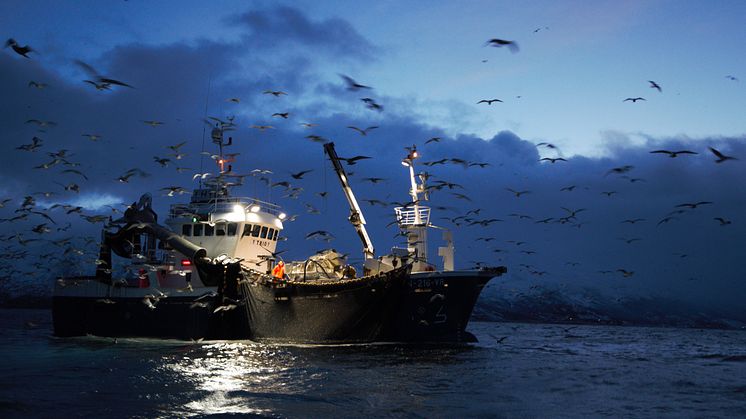
Nyhet -
Phd study by Ana Sofia Aniceto - Tromsø whales studied by aerial drones
Tromsø whales studied by aerial drones
We extend our warmest congratulations to Dr. Ana Sofia Aniceto who successfully defended her Ph.D. degree on 19 June 2018. Ana Sofia is part of an emerging field in the development and application of unmanned sampling technologies for marine environmental surveys and monitoring activities - a key focus area for Akvaplan-niva. Her thesis was titled “Unmanned aerial vehicles for marine mammal surveys in arctic and sub-arctic regions”.
Ana Sofia Aniceto's Ph.D. project was conducted at Akvaplan-niva with financing from The Research Centre for Arctic Petroleum Exploration, Department of Geosciences, UiT – The Arctic University of Norway. She was supervised by Adjunct Professor JoLynn Carroll, Akvaplan-niva / Department of Geosciences, UiT and leader of the ARCEx workpackage, Environmental Risk Management http://www.arcex.no/work-packages/environment-risk-management. Her Ph.D. co-supervisors were Martin Biuw, Institute of Marine Research, and Ulf Lindstrøm, Institute of Marine Research.
The Ph.D. assessment committee consisted of:
Dr. Robert Gisiner, Marine Environmental Science/ Biology International Association of Geophysical Contractors, USA (1st opponent),
Dr. Sophie Smout, Sea Mammal Research Unit, University of St. Andrews, UK (2nd opponent), and
Professor Alfred Hanssen, Department of Geosciences, UiT (Internal member and head of committee)
Professor Arne O. Smalås, Dean of Faculty of Science and Technology, moderated the defence.
Reference:
Aniceto, A.S. (2018): Unmanned aerial vehicle for marine mammal studies in arctic and sub-arcric regions. A dissertation for the degree of Philosophiae
Findings of PhD study: how unmanned aerial vehicles can be used to monitor whales.
Aerial drones,also known as unmanned aerial vehicles, have received academic, industrial, and regulatory attention during the last few decades. Whale research and monitoring is one of the fields that has boosted the application of these systems. The reason for this is that traditional methods are more expensive and time consuming and less flexible.
A detailed review of systems for studying whales offshore was made to evaluate which drones are better suited for population, mitigation and focal monitoring. From this review fixed-wing powered aircrafts were determined to be the best option for offshore deployments given their long operational range. To test how this type of drone perform under Arctic conditions, we conducted field trials during summer and winter outside Tromsø (Arctic Norway). We performed these tieals in areas where humpback, killer whales, and harbor porpoises often occur. It was found that water turbulence and image brightness were the key factors affecting certainty of detection for humpback and killer whales. Despite their small size, harbor porpoises were clearly visible at 150 meters altitude. Simulated flights deployed at 5 to 6 minute-intervals following the same track, gave the best detections of humpback whales, mapping e their average whale dive duration. This highlights the importance of understanding what affects whale detection, from an image acquisition point of view and from knowledge of whale behavior.
Ana Sofia Aniceto was born in Portugal, where she studied marine biology at the University of Lisbon. She took her master's degree in England on marine conservation and management studying ship collisions with fin whales. Her research led her to Tromsø, where she worked as a research assistant and adviser for Akvaplan-niva, before she started her PhD on the use of unmanned technologies for marine monitoring and research.
Contact information
Ana Sofia Aniceto
telephone number: + 47 46909601
Email: sofy.lima@gmail.com

